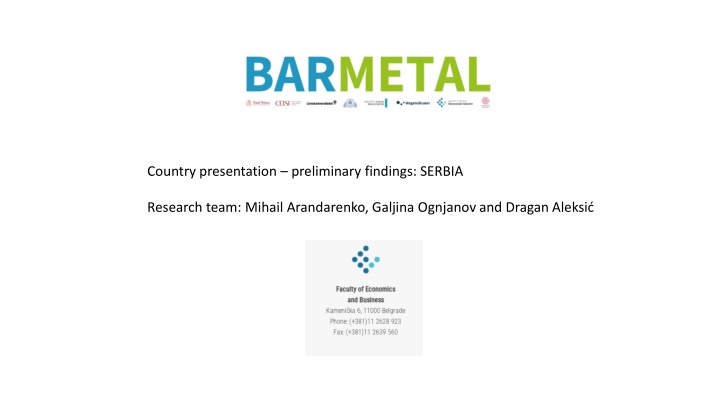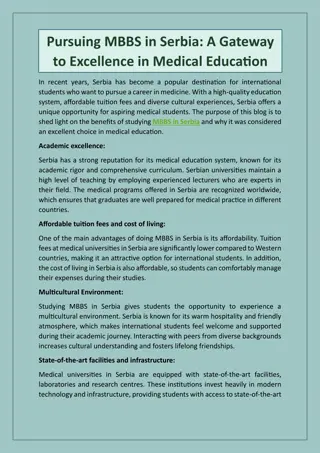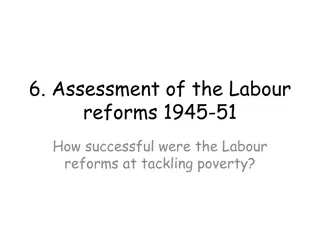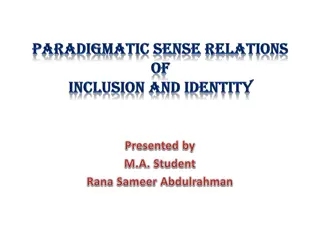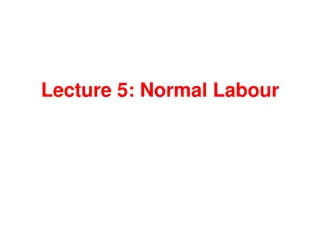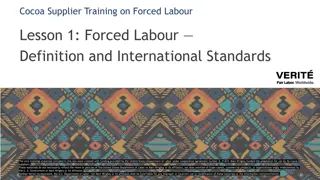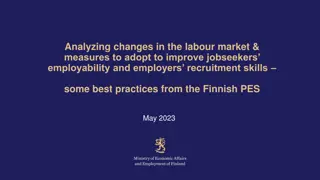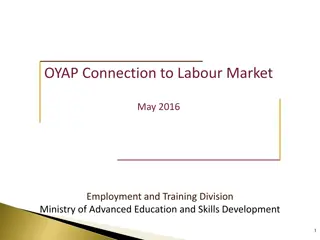Preliminary Findings on Labour Market and Industrial Relations in Serbia
Research findings on the labour market, industrial relations, and collective bargaining in Serbia, focusing on the metal sector. Insights include trends, challenges, role of trade unions, government initiatives, and case study analysis.
Download Presentation

Please find below an Image/Link to download the presentation.
The content on the website is provided AS IS for your information and personal use only. It may not be sold, licensed, or shared on other websites without obtaining consent from the author.If you encounter any issues during the download, it is possible that the publisher has removed the file from their server.
You are allowed to download the files provided on this website for personal or commercial use, subject to the condition that they are used lawfully. All files are the property of their respective owners.
The content on the website is provided AS IS for your information and personal use only. It may not be sold, licensed, or shared on other websites without obtaining consent from the author.
E N D
Presentation Transcript
Country presentation preliminary findings: SERBIA Research team: Mihail Arandarenko, Galjina Ognjanov and Dragan Aleksi
1. Introduction: labour market, industrial relations, 1. Introduction: labour market, industrial relations, collective bargaining collective bargaining Metal sector: C24, C25 and C29. About 2.6% of GVA, and more than 2% of total GDP. C24 and C29 recorded the real cumulative growth of 75% and 57%, C25 decreased by 5% (30% and 21% for the Manufacturing) In 2022 more than 5.8% of all formal workers were employed, more than a quarter of total Manufacturing employment. The number of registered employed nearly doubled in the past decade, from 78,000 to 131,000. Industrial relations in Serbia are regulated by the comprehensive body of labour legislation. Trade Unions are established on all three levels. Trade Union density has been decreasing since 2000, reaching around 25%, as well as adjusted bargaining rate which at around 30%. Representativeness of workers' and employers' associations remains the primary constraint hindering possibilities for collective bargaining. Two Confederations of Trade Unions and one Employers Associations are representative thus participate in SEC. General collective agreement is non-existent, sectoral collective agreement for metal sector has also not been negotiated, whereas collective bargaining on company level are mostly practiced within large companies. Positive labour market trends in the last decade. All idicators improved. Quality of employment stays low. Temporary employment constantly increasing (work on seasonal and occasional jobs, service contracts, and other atypical work arrangements).
2&3. DAD: development, challenges and the 2&3. DAD: development, challenges and the role of collective bargaining role of collective bargaining Industrial Policy Strategy of the Republic of Serbia for 2021-2030 addresses the issues of education, fostering innovation, digital transformation, investment, infrastructure, internationalisation and circular economy. Smart Specialisation Strategy of the Republic of Serbia for the period 2020-2027 which incorporates vertical (sectoral) policies further pointing at the relevance of DAD, specificaly for metal sector (machinery and equipment manufacturing) as one of four priority sectors. As part of accession process, Ministry for Environmental Protection of the Republic of Serbia formed the Special Working Group for Circular Economy in support to private companies thus facilitating transformation of their traditional business models towards circular economy: Industry 4.0 and DAD present narratives in public discourse, advocated within both academic and professional circles. The role of trade unions in these processes is still rather weak. Governmental initiatives for DAD in the metal sector are predominant. Accession process and transposition of the EU regulatory and strategic documents The manufacturing industry continues to be the single largest sector in terms of its share of GDP, at 13% in 2021. Roadmap for Circular Economy in Serbia 2020, An export-oriented sector expectred to improve its production processes and harmonize with the EU standards in light of the transition to circular economy and green products. the Low Carbon Development Strategy for period 2023-2050
4. Case study analysis: justification & 4. Case study analysis: justification & descprition of cases descprition of cases Two companies selected for case studies in collective bargaining focused on DAD in the metal sector in Serbia are Metalac and Wacker Neuson (WN). Both companies are large in size, well recognized on the local market and strongly export-oriented. Metalac is a local company. Wacker Neuson is a greenfiled investment Wacher Neuson SE. Both companies have representative trade unions active in collective bargaining. Both companies have introduced LEAN/KAIZEN system (in Metalac it was rebranded to METAZEN) allowing active participation of workers in improvement of working processes and working environment through financial incentives and other benefits for sharing their suggestions and ideas. Both companies have made moves toward DAD. Re BARMETAL definition WN is supplier, Metalac in its product portfolio has both OEM products and component parts produced for numerous international customers in automotive industry. Both companies have initiated DAD processes and have developed further plans and strategies in this direction.
Case studies: main findings Metalac group Founded in 1959, socially owned company till 1998 Group comprising of four business entities in metal sector Union density more than 80%, collective agreement signed and revised every 6 months The awareness of DAD changes and its effects seems low coupled with lack of initiatives to bargain over DAD Main managerial decisions including DAD are made without consultations with trade union representatives Digitalization and automatization have led to changes in work requirements, the need for upskilling and reskilling, yet safety, efficiency and productivity have improved, the work has been facilitated, most of the workers remained on their posts working with automatized machines. Wacker Neuson Greenfield investment, first production site opened in 2009, employing around 650 people, relocated in 2022 currently employing around 800 workers Trade union density around 45%, higher among production workers (around 60%), collective agreement is signed with a clause that will be reactivated to negotiate other important issues affecting working conditions and workers compensations Over the last year much has been done toward automatization and digitalization Initiatives for DAD came from Wacker Neuson SE DAD is not recognised an important issue in collective bargaining In support of DAD and transition from manual operation to digital technology the company has introduced an internal training center and entered into dual education system
5. Preliminary findings and conclusions DAD might open a new space for collective bargaining refocusing from traditional topics to the future oriented (upskilling and reskilling in light of changing technologies and work processes) DAD might contribute to improvement of collective bargaining on both sectoral and national levels, as future oriented collective bargaining is more likely to be initiated on national or industry (sectoral) level. This optimistic scenario might be hindered by decreasing trade union and employers associations density. DAD may further contribute to decreasing trade union density by increasing demand for qualified workers with lowest unionization rate. In a pessimistic scenario, collective bargaining might further diminish even the company level collective bargaining should the trade unions not manage to promote the need for and benefits of unionization and its rising importance in light of DAD. Pesimistic and optimistic views of the overall impact of DAD on employment. Optimistic scenario is more likely in the metal sector, in which DAD is not particularly affecting job losses, yet it may lead to improved productivity, increased competitiveness resulting in net jobs gains requiring higher qualification and thus opening space for upskilling and reskilling of workers. As the above is linked with strategic orientation built in the main policy documents, goverment representatives in SEC might decide to include future trainings, upskilling and reskillings of workers as yet another relevant topic within collective bargaining on national level (apart from minimum wage).
